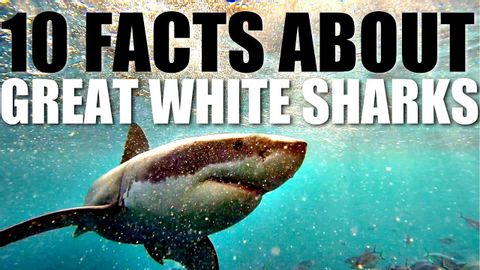關於大白鯊的10個事實 (10 Facts About Great White Sharks)
 沒有此條件下的單字
沒有此條件下的單字- v.t./i.出現;估計;我認為〜;認為
- n.身影;(計算過的)數量;肖像;圖;形狀;人物;名人;人影;數字
US /ˈɛvɪdəns/
・
UK /'evɪdəns/
- n. (u.)證據;證據 (法律)
- v.t.表明;證明
US /ˈpɪriəd/
・
UK /ˈpɪəriəd/
- n. (c./u.)時期;(用於句末;表示斷定的口氣)就這樣;句號;月經;期間
US /ˈbesɪkəli,-kli/
・
UK /ˈbeɪsɪkli/

